Powerchair football (or Power Soccer ), the most popular sport for power wheelchair users around the world, was created in France in 1978. With steady growth, the sport is now played in over 25 countries, with more joining every year. For more on the history of this wonderful sport, visit the International Federation of Powerchair Football Association (FIPFA) website.
FIPFA (Fédération Internationale de Powerchair Football Association) was established in 2006 to govern the sport and is headquartered in Paris, France.
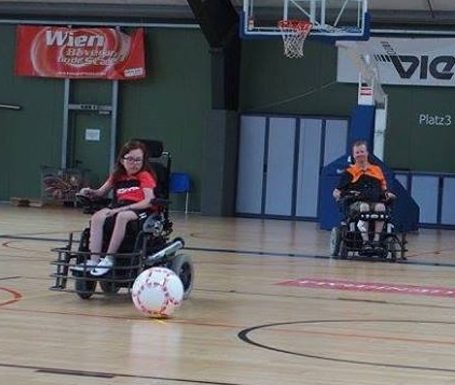
The Game.
Powerchair Football is a game between two teams composed of 4 players, one of whom is the goalkeeper. The game is played on a flat surface of 28m by 15m. The players use an electric wheelchair specific to the sport.
The ball size is 13 centimeters, which means it is twice the size of a soccer ball.
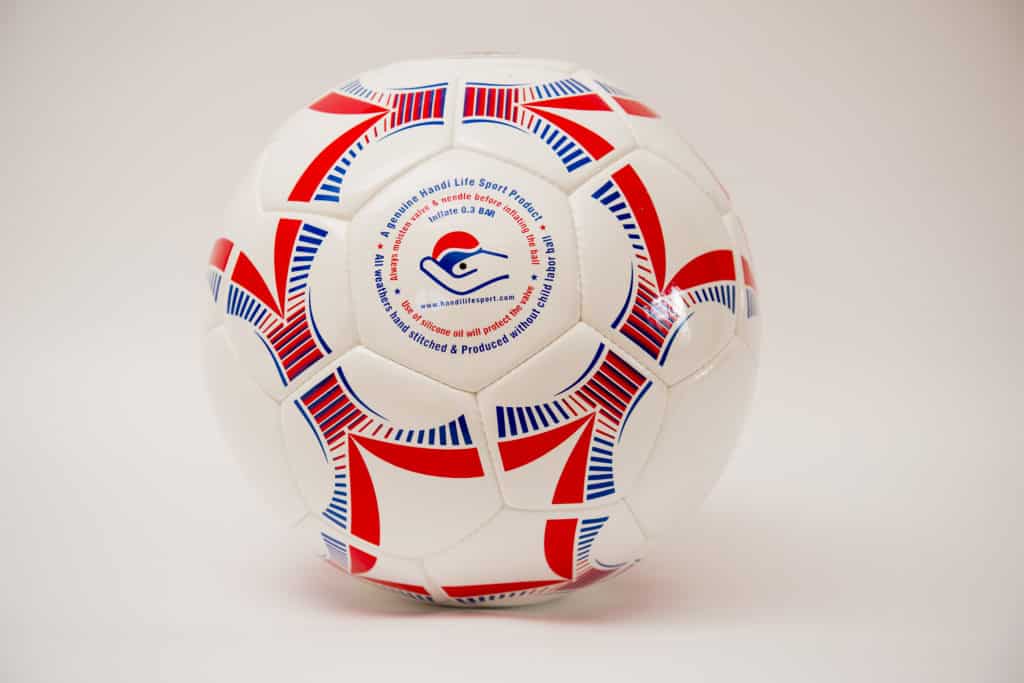
Who is eligible to play?
Eligibility FIPFA provides sports opportunities for individuals with the following impairment types:
Neurological impairment including spastic hypertonia, dystonia, athetosis, and ataxia
Myopathies including muscular dystrophy
Spinal cord lesions
Orthopedic impairments These eligible impairment types must be permanent and verifiable (for example, will not resolve in the foreseeable future regardless of physical training, rehabilitation or other therapeutic interventions) and cause a permanent and verifiable activity limitation that causes difficulty in sports performance.
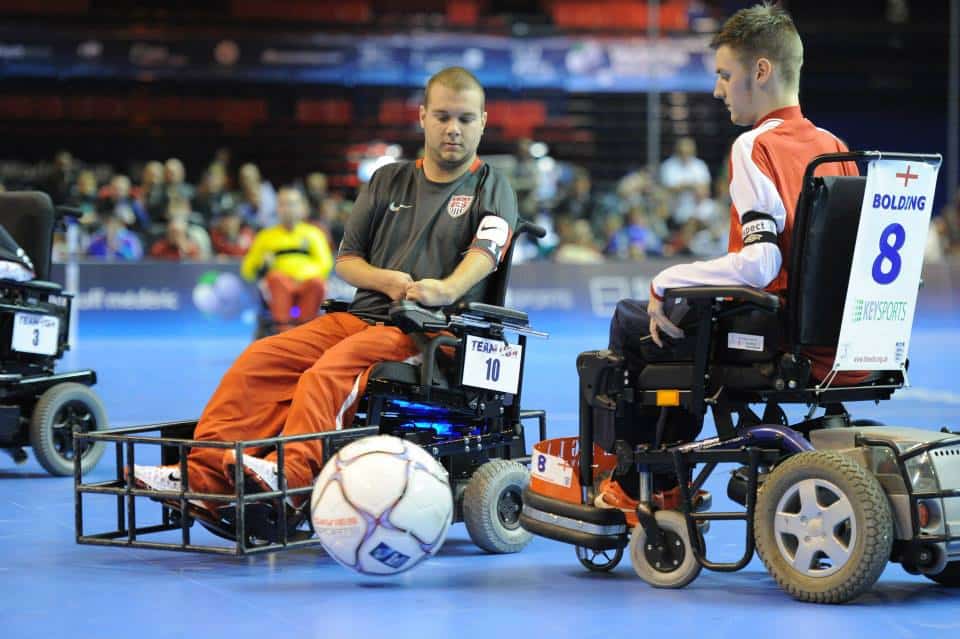
Classification
Every athlete eligible to take part in a competition must be allocated a Sport Class in accordance with the rules of FIPFA.
| P.F1 | This denotes a player who has highly significant levels of physical difficulty which affects their overall performance. |
| P.F2 | This denotes a player who has moderate to mild levels of physical difficulty which affects their overall performance. |
How to play Powerchair Football
The Powerchair Football is played in on a standard-sized basketball court. Each team is allowed 4 players on the court at one time including the goalkeeper. A match consists of two 20-minute periods. Because of the two-dimensional aspect of this game (players are typically unable to kick the ball into the air), artificial space has to be created around the players. The two distinct differences in the laws from the able-bodied game are 1) the “two-on-one” rule and 2) the 3-in-the-goal-area violation.
- “2-on-1”. Only a player and an opponent are allowed within 3 meters of the ball when it is in play. If a teammate of either one comes within the 3 meters the referee may call an infringement and award an indirect free kick. This forces the players to spread the field and prevents clogging up of play, allowing for a greater free flow of play. The only exception to this violation is if one of the 2 teammates is a goalkeeper inside his/her own goal area, then there is no infraction of the laws.
- “3-in-the-goal-area”. The defending team is only allowed to have 2 players in their own goal area. If a third player enters the area, the referee may stop the game and award an indirect free kick to the opposing team.
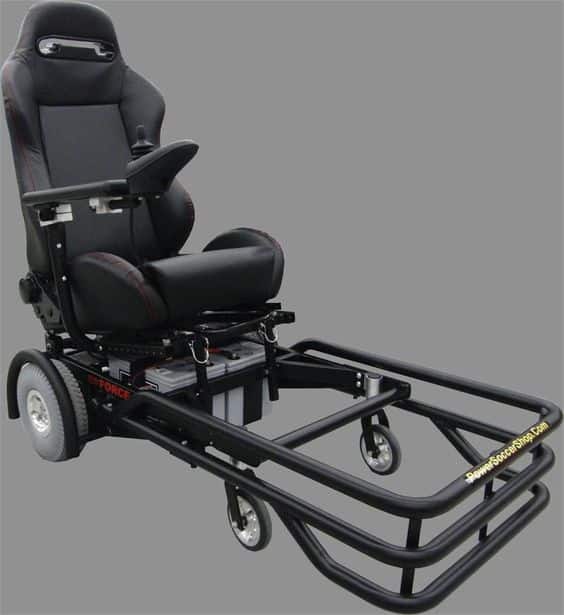
In the case of either of these infractions (2-on-1 and 3-in-the-area), the referee may refrain from making the call if the player in question is not affecting the play (similar to the concept of the offside law in able-bodied football).
Additionally, because many of the players do not have the upper body strength to throw the ball with their arms when the ball leaves the touchline of the field, the players kick the ball back into play. In other words, instead of a “throw-in” from the sideline, powerchair football has a “kick-in”…and because the ball is ‘kicked’ a goal can be scored directly. Intentionally striking or ramming another player may result in a penalty.
Players are required to use a powerchair with 4 or more wheels. The maximum allowable speed during a match is 10 km/h (6.2 mph), and the referees will inspect the players’ speed before the match begins. A lap belt and foot guard have also required equipment. The ball is an oversized soccer ball, 13 inches (33 cm) in diameter.

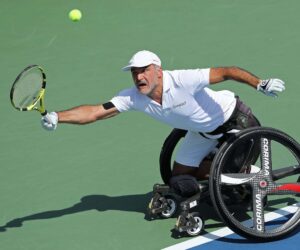
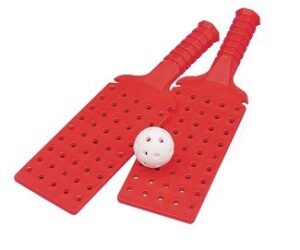
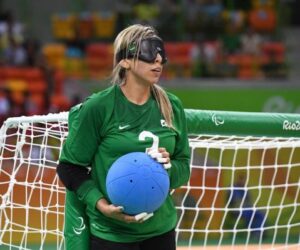
Pingback: Sport Is About Emotions And Feelings | ParaVida Sport
Pingback: Disability Definition And A Better Understanding Of Disabled
Pingback: Down Syndrome Won’t Make You Stop Doing Sports
I am really pleased to say it is an interesting post to read.
King regards,
Mead Cannon